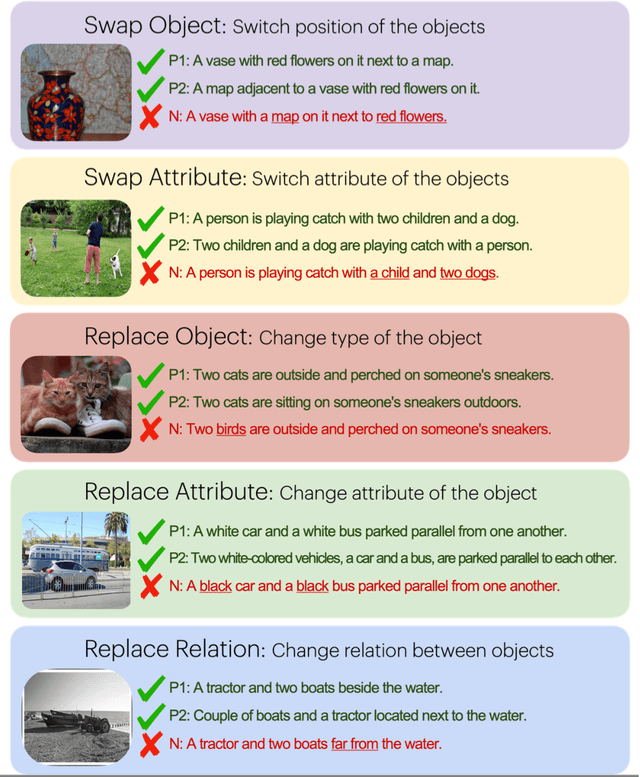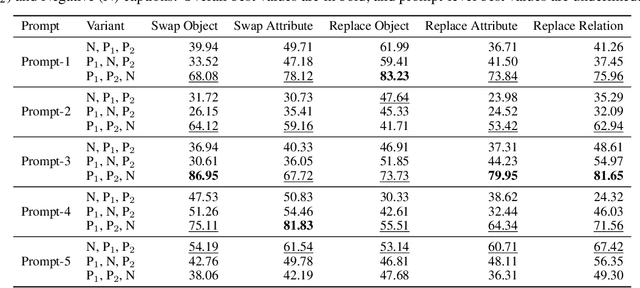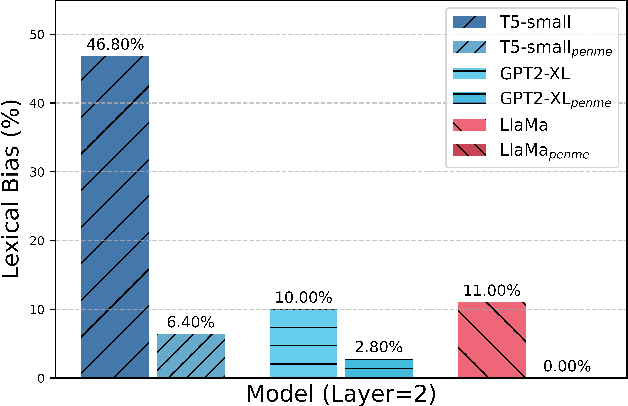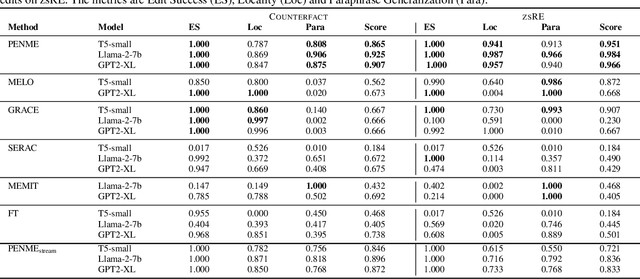Hassan Sajjad
Understanding Syntactic Generalization in Structure-inducing Language Models
Aug 11, 2025Abstract:Structure-inducing Language Models (SiLM) are trained on a self-supervised language modeling task, and induce a hierarchical sentence representation as a byproduct when processing an input. A wide variety of SiLMs have been proposed. However, these have typically been evaluated on a relatively small scale, and evaluation of these models has systematic gaps and lacks comparability. In this work, we study three different SiLM architectures using both natural language (English) corpora and synthetic bracketing expressions: Structformer (Shen et al., 2021), UDGN (Shen et al., 2022) and GPST (Hu et al., 2024). We compare them with respect to (i) properties of the induced syntactic representations (ii) performance on grammaticality judgment tasks, and (iii) training dynamics. We find that none of the three architectures dominates across all evaluation metrics. However, there are significant differences, in particular with respect to the induced syntactic representations. The Generative Pretrained Structured Transformer (GPST; Hu et al. 2024) performs most consistently across evaluation settings, and outperforms the other models on long-distance dependencies in bracketing expressions. Furthermore, our study shows that small models trained on large amounts of synthetic data provide a useful testbed for evaluating basic model properties.
Dependency Parsing is More Parameter-Efficient with Normalization
May 26, 2025Abstract:Dependency parsing is the task of inferring natural language structure, often approached by modeling word interactions via attention through biaffine scoring. This mechanism works like self-attention in Transformers, where scores are calculated for every pair of words in a sentence. However, unlike Transformer attention, biaffine scoring does not use normalization prior to taking the softmax of the scores. In this paper, we provide theoretical evidence and empirical results revealing that a lack of normalization necessarily results in overparameterized parser models, where the extra parameters compensate for the sharp softmax outputs produced by high variance inputs to the biaffine scoring function. We argue that biaffine scoring can be made substantially more efficient by performing score normalization. We conduct experiments on six datasets for semantic and syntactic dependency parsing using a one-hop parser. We train N-layer stacked BiLSTMs and evaluate the parser's performance with and without normalizing biaffine scores. Normalizing allows us to beat the state of the art on two datasets, with fewer samples and trainable parameters. Code: https://anonymous.4open.science/r/EfficientSDP-70C1
TALE: A Tool-Augmented Framework for Reference-Free Evaluation of Large Language Models
Apr 10, 2025Abstract:As Large Language Models (LLMs) become increasingly integrated into real-world, autonomous applications, relying on static, pre-annotated references for evaluation poses significant challenges in cost, scalability, and completeness. We propose Tool-Augmented LLM Evaluation (TALE), a framework to assess LLM outputs without predetermined ground-truth answers. Unlike conventional metrics that compare to fixed references or depend solely on LLM-as-a-judge knowledge, TALE employs an agent with tool-access capabilities that actively retrieves and synthesizes external evidence. It iteratively generates web queries, collects information, summarizes findings, and refines subsequent searches through reflection. By shifting away from static references, TALE aligns with free-form question-answering tasks common in real-world scenarios. Experimental results on multiple free-form QA benchmarks show that TALE not only outperforms standard reference-based metrics for measuring response accuracy but also achieves substantial to near-perfect agreement with human evaluations. TALE enhances the reliability of LLM evaluations in real-world, dynamic scenarios without relying on static references.
DAFE: LLM-Based Evaluation Through Dynamic Arbitration for Free-Form Question-Answering
Mar 11, 2025Abstract:Evaluating Large Language Models (LLMs) free-form generated responses remains a challenge due to their diverse and open-ended nature. Traditional supervised signal-based automatic metrics fail to capture semantic equivalence or handle the variability of open-ended responses, while human evaluation, though reliable, is resource-intensive. Leveraging LLMs as evaluators offers a promising alternative due to their strong language understanding and instruction-following capabilities. Taking advantage of these capabilities, we propose the Dynamic Arbitration Framework for Evaluation (DAFE), which employs two primary LLM-as-judges and engages a third arbitrator only in cases of disagreements. This selective arbitration prioritizes evaluation reliability while reducing unnecessary computational demands compared to conventional majority voting. DAFE utilizes task-specific reference answers with dynamic arbitration to enhance judgment accuracy, resulting in significant improvements in evaluation metrics such as Macro F1 and Cohen's Kappa. Through experiments, including a comprehensive human evaluation, we demonstrate DAFE's ability to provide consistent, scalable, and resource-efficient assessments, establishing it as a robust framework for evaluating free-form model outputs.
Seeing Syntax: Uncovering Syntactic Learning Limitations in Vision-Language Models
Dec 11, 2024Abstract:Vision-language models (VLMs), serve as foundation models for multi-modal applications such as image captioning and text-to-image generation. Recent studies have highlighted limitations in VLM text encoders, particularly in areas like compositionality and semantic understanding, though the underlying reasons for these limitations remain unclear. In this work, we aim to address this gap by analyzing the syntactic information, one of the fundamental linguistic properties, encoded by the text encoders of VLMs. We perform a thorough analysis comparing VLMs with different objective functions, parameter size and training data size, and with uni-modal language models (ULMs) in their ability to encode syntactic knowledge. Our findings suggest that ULM text encoders acquire syntactic information more effectively than those in VLMs. The syntactic information learned by VLM text encoders is shaped primarily by the pre-training objective, which plays a more crucial role than other factors such as model architecture, model size, or the volume of pre-training data. Models exhibit different layer-wise trends where CLIP performance dropped across layers while for other models, middle layers are rich in encoding syntactic knowledge.
Sensitivity of Generative VLMs to Semantically and Lexically Altered Prompts
Oct 16, 2024



Abstract:Despite the significant influx of prompt-tuning techniques for generative vision-language models (VLMs), it remains unclear how sensitive these models are to lexical and semantic alterations in prompts. In this paper, we evaluate the ability of generative VLMs to understand lexical and semantic changes in text using the SugarCrepe++ dataset. We analyze the sensitivity of VLMs to lexical alterations in prompts without corresponding semantic changes. Our findings demonstrate that generative VLMs are highly sensitive to such alterations. Additionally, we show that this vulnerability affects the performance of techniques aimed at achieving consistency in their outputs.
Towards Understanding the Feasibility of Machine Unlearning
Oct 03, 2024Abstract:In light of recent privacy regulations, machine unlearning has attracted significant attention in the research community. However, current studies predominantly assess the overall success of unlearning approaches, overlooking the varying difficulty of unlearning individual training samples. As a result, the broader feasibility of machine unlearning remains under-explored. This paper presents a set of novel metrics for quantifying the difficulty of unlearning by jointly considering the properties of target model and data distribution. Specifically, we propose several heuristics to assess the conditions necessary for a successful unlearning operation, examine the variations in unlearning difficulty across different training samples, and present a ranking mechanism to identify the most challenging samples to unlearn. We highlight the effectiveness of the Kernelized Stein Discrepancy (KSD), a parameterized kernel function tailored to each model and dataset, as a heuristic for evaluating unlearning difficulty. Our approach is validated through multiple classification tasks and established machine unlearning algorithms, demonstrating the practical feasibility of unlearning operations across diverse scenarios.
Reference-Guided Verdict: LLMs-as-Judges in Automatic Evaluation of Free-Form Text
Aug 20, 2024Abstract:The emergence of Large Language Models (LLMs) as chat assistants capable of generating human-like conversations has amplified the need for robust evaluation methods, particularly for open-ended tasks. Conventional metrics like BLEU and ROUGE, while useful, are increasingly inadequate for capturing the subtle semantics and contextual richness of such generative outputs. We propose a reference-guided verdict method that automates the evaluation process by leveraging multiple LLMs-as-judges. Through experiments on three open-ended question-answering tasks, we demonstrate that combining multiple LLMs-as-judges significantly improves the reliability and accuracy of evaluations, particularly in complex tasks where a single model might struggle. Our findings reveal a strong correlation with human evaluations, establishing our method as a viable and effective alternative to traditional metrics and human judgments, particularly in the context of LLM-based chat assistants where the complexity and diversity of responses challenge existing benchmarks.
Resolving Lexical Bias in Edit Scoping with Projector Editor Networks
Aug 19, 2024



Abstract:Weight-preserving model editing techniques heavily rely on the scoping mechanism that decides when to apply an edit to the base model. These scoping mechanisms utilize distance functions in the representation space to ascertain the scope of the edit. In this work, we show that distance-based scoping functions grapple with lexical biases leading to issues such as misfires with irrelevant prompts that share similar lexical characteristics. To address this problem, we introduce, Projector Editor Networks for Model Editing (PENME),is a model editing approach that employs a compact adapter with a projection network trained via a contrastive learning objective. We demonstrate the efficacy of PENME in achieving superior results while being compute efficient and flexible to adapt across model architectures.
Modality Invariant Multimodal Learning to Handle Missing Modalities: A Single-Branch Approach
Aug 14, 2024



Abstract:Multimodal networks have demonstrated remarkable performance improvements over their unimodal counterparts. Existing multimodal networks are designed in a multi-branch fashion that, due to the reliance on fusion strategies, exhibit deteriorated performance if one or more modalities are missing. In this work, we propose a modality invariant multimodal learning method, which is less susceptible to the impact of missing modalities. It consists of a single-branch network sharing weights across multiple modalities to learn inter-modality representations to maximize performance as well as robustness to missing modalities. Extensive experiments are performed on four challenging datasets including textual-visual (UPMC Food-101, Hateful Memes, Ferramenta) and audio-visual modalities (VoxCeleb1). Our proposed method achieves superior performance when all modalities are present as well as in the case of missing modalities during training or testing compared to the existing state-of-the-art methods.
 Add to Chrome
Add to Chrome Add to Firefox
Add to Firefox Add to Edge
Add to Edge